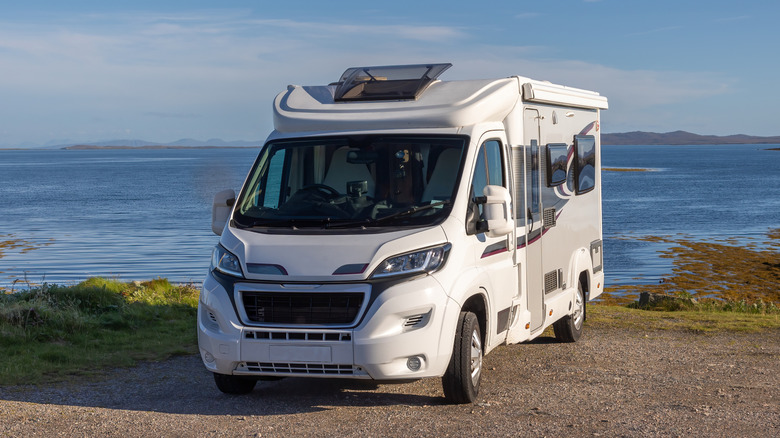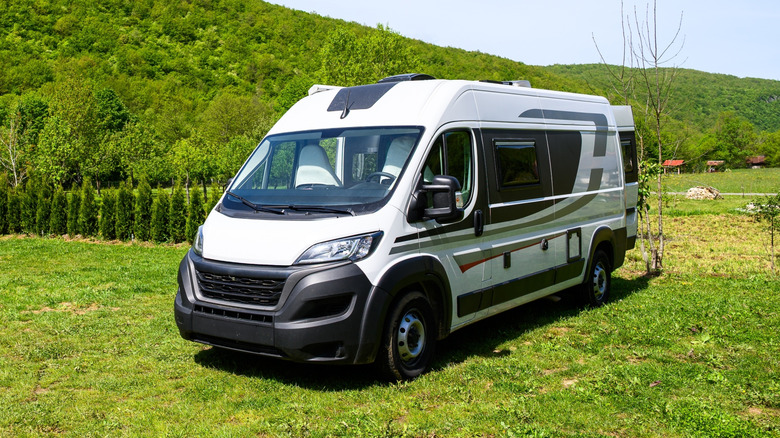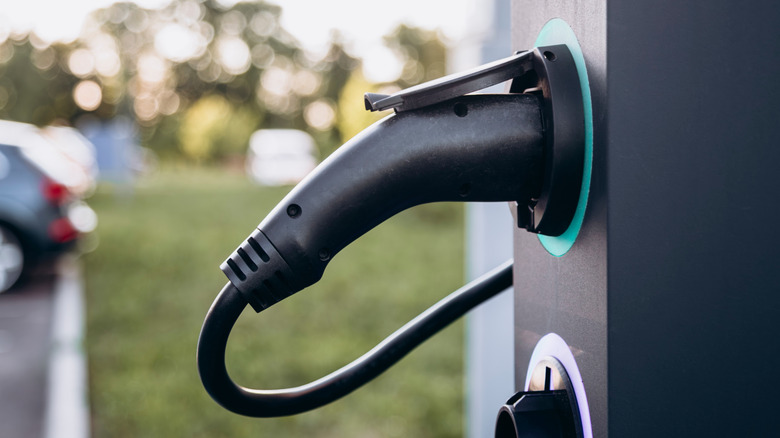Electric RVs Have One Big Problem Holding Them Back From Going Mainstream
When adventuring in the great outdoors, you should always try to leave nature undisturbed, and an electric recreational vehicle (ERV) can be far better for the environment than something gas powered. But while they're great for reducing carbon emissions and keeping the world green, taking a trip in one is likely unobtainable for many, at least for now. Currently, the staggering cost of a new ERV halts public adoptability, with many vehicles going well beyond $100,000. Electric vehicles in general are rather expensive right now, and it's halting adoption rates in a big way. For ERVs, batteries are likely causing the largest financial problems, which helps explain why so few companies currently have anything on the market. However, several manufacturers are developing prototypes.
ERVs will become more accessible as more manufacturers enter the field, and future developments will help bring the cost down. Further evolution of battery tech will also help with other issues these vehicles experience, including limited range and problems with charging in remote areas. But until something changes concerning the high cost and technological restraints of these vehicles, they're likely to remain niche amongst the super dedicated.
How much does an all-electric vehicle cost?
The manufacturing process for electric vehicle batteries is complicated and requires a lot of raw materials, such as lithium and nickel. Larger vehicles require larger batteries, and ERVs suffer from not only needing energy for the powertrain but also for the amenities that come with a typical camper. The state of battery technology as it stands simply isn't cutting it.
In the current market, ERV options are limited and pricey. For example, manufacturer Grounded offers two all-electric models: The 24-foot Zevo 600 and the 20-foot Zevo 400. While both offer impressive features, such as a full smart home experience and all-wheel drive, the $165,000 starting price means only a select few will be taking these on the road. The Vanacea from Maxwell Vehicles is also available to consumers, and the company has multiple options for choosing your own build. However, considering the vehicles are made to order, this can also be a highly expensive option.
Though selections for all-electric RVs are currently limited, several manufacturers are developing prototypes, including Winnebago's eRV2, AC Future's AI-THd, and THOR's Vision Vehicle. Should these vehicles come to market, it will likely be a huge boon for user adoptability and costs. Yet while the price of an ERV is preventing mainstream success, there are still additional issues that are preventing wider popularity.
Electric RVs still don't have much range
Though a 3,000-mile range for electric vehicles may one day come to fruition, the typical range for an electric RV right now may cut a long road trip short. The 270-plus miles of range in Grounded's Zevo series or the 150/250-mile range options in the Vanacea may sound good for a daily commute, but when on a long road trip, stopping frequently for charging is going to be frustrating. If you're camping deep in the woods or somewhere out of range, it can become impossible.
This is another issue that's tied into battery production. However, companies are working toward advancing battery tech, which will help the ERV market. Right now, Huawei is working on a battery that aims to last over 1,800 miles on a single five-minute charge. Should a battery such as this come to fruition, it will likely change how we think of ERVs.
As things stand, it's likely going to be some time before electric RVs are accessible to more individuals. With the high cost being the primary factor, don't expect to take that big road trip in an environmentally friendly vehicle just yet. However, technology moves pretty fast these days. What may seem like a pipe dream today could be a tangible future before you know it.


